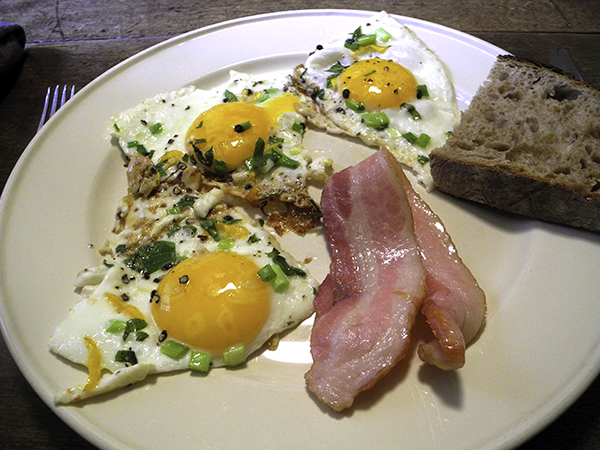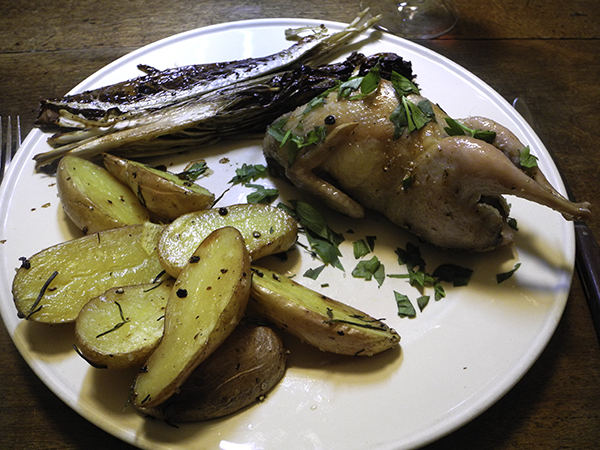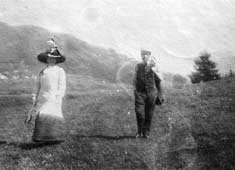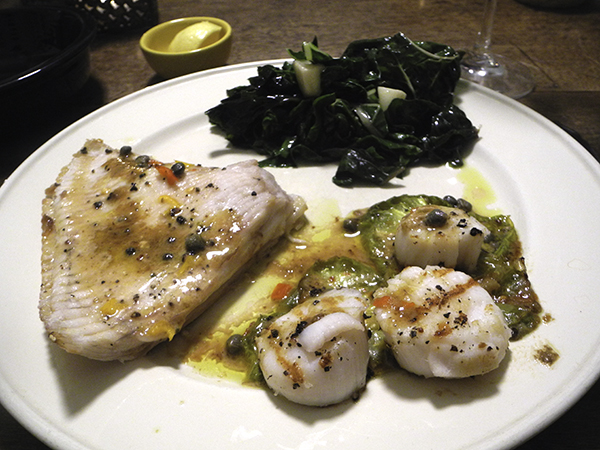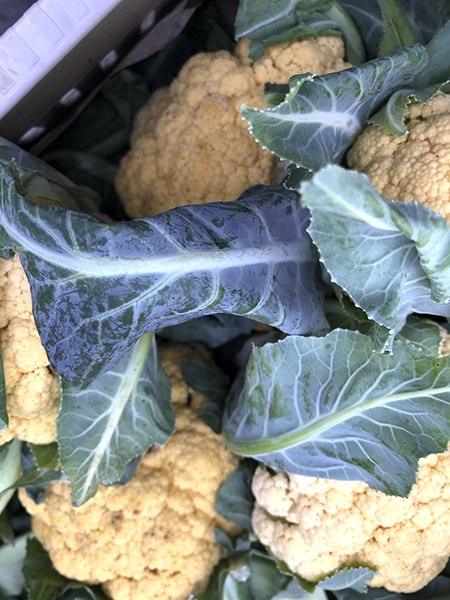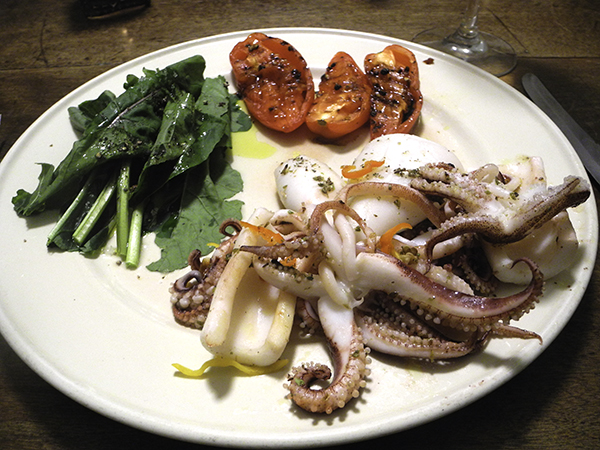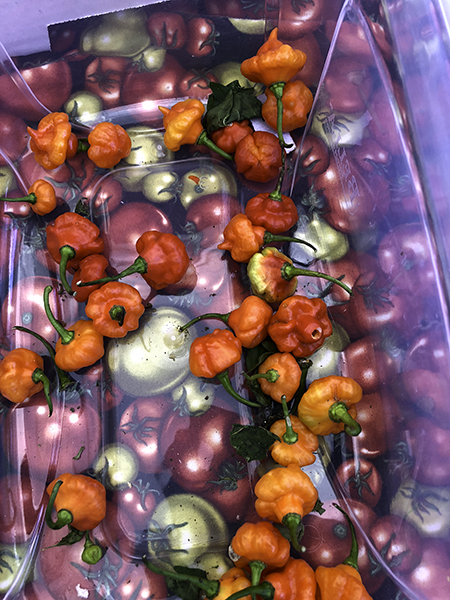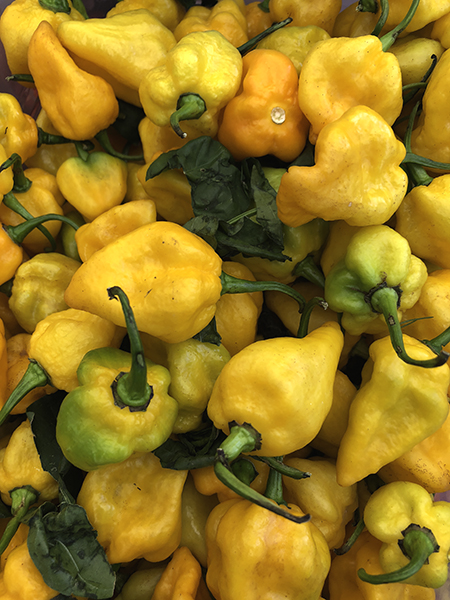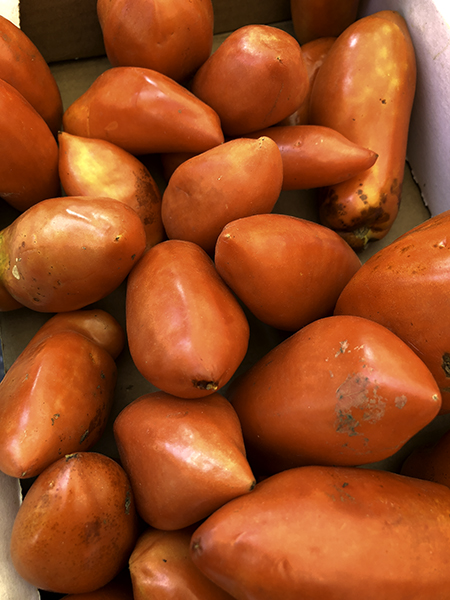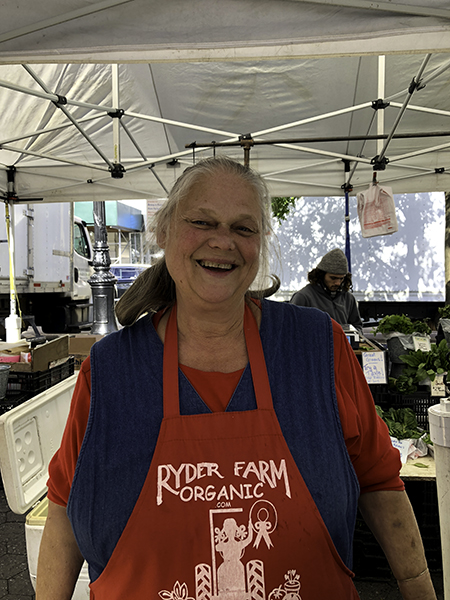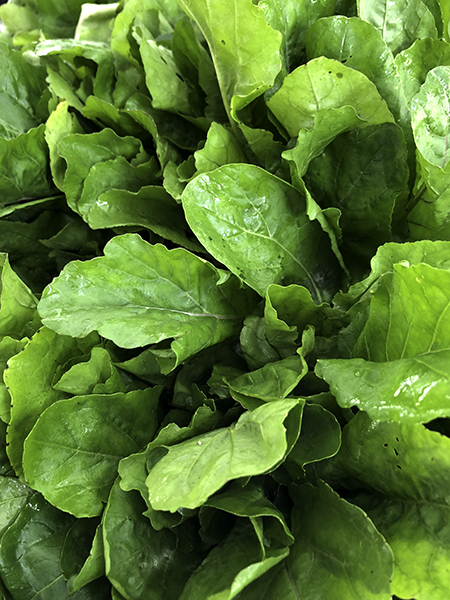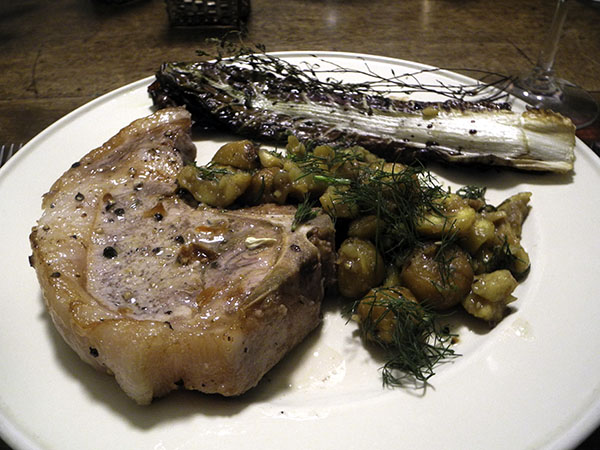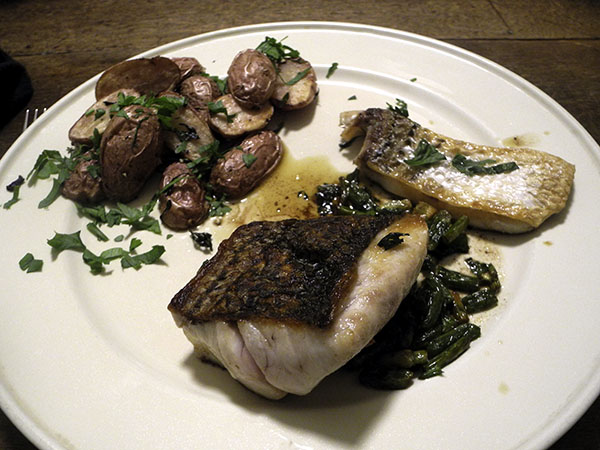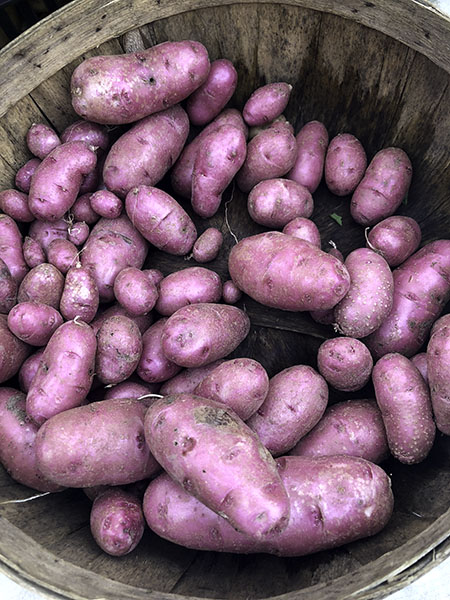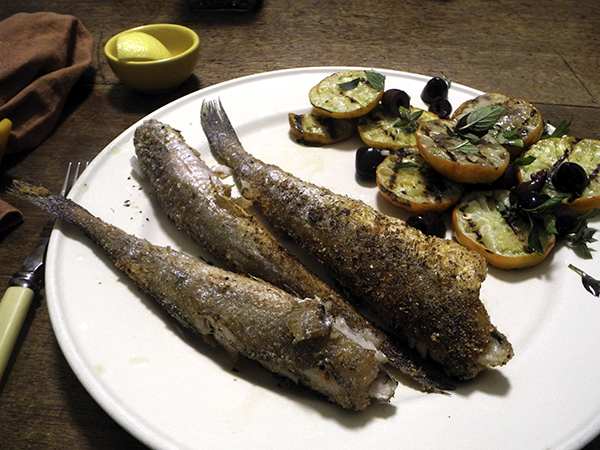
On Mondays, the first and slowest day of the Union Square Greenmarket week, the selection of seafood at the Karlin family’s stand is always smaller than it is on Saturday, the busiest Greenmarket day of the week, and as it was, yesterday I arrived later than usual. Jan and Karl [Carl?] both told me they had brought even less of a catch than they usually do, because of the heavy weather (we call it a nor’easter in New England, and far eastern Long Island is basically more New England than it is New York). Consequently, by the time I arrived at the fish stand fairly late on Monday and because I cook fish 3 or 4 days of the week, there was almost nothing in the buckets that I hadn’t cooked quite recently.
But there was a good supply of whiting (whole, but they had lost their heads somewhere since leaving the sea). I rarely cook whole fish, mostly because I think of it as a bit of a fuss – or maybe I should say, ‘stressful’ – both to prepare and to eat, and, looking back on this site, it seems that I’ve only cooked whole whiting twice before.
Their relative novelty, and the fact that, when I asked for help deciding, both mongers pointed to the bucket holding what I have since learned are, technically, Merlucciidae, of the larger family Gadidae, together pushed me over the top. I usually do go with the recommendations given by the people selling their own comestibles.
There was also some significant economy in buying whole fish over fillets, and this species is already seriously underpriced, especially relative to its many virtues. While the difference of a few dollars, especially when you’re only buying for 2 people, isn’t really enough to outweigh other considerations, I went with the whiting.
I bought a larger amount, by weight, than I usually do: It set me back all of $4.90 for one and a quarter pounds of very fresh, cleaned (although I cut off most of the remaining fins) beautifully whole, (but without heads) fish, and they were easily filleted on the plates.
The vegetable was somewhat more expensive than the whiting, but every bit as delicious.
The recipe? While I was still at the market I hadn’t remembered cooking it before, so I looked on line, to at least reassure myself that I could do it without much fuss, more than as an actual guide, but I ended up actually using the first recipe that came up on my phone screen. It surely helped that I had all of the spices, whole, except for the cayenne, in my kitchen cabinet.
I’ll probably be repeating this recipe in some form with other meals, and other fish, especially hake or cod, although I should try to remember that, for more af a Moroccan effect, the fish can be prepped with the spice rub, as with a marinade, and then refrigerated for up to a day (placed in a colander set in a deep bowl and covered tightly, left in the refrigerator until ready to cook).
- six fresh whiting (18 ounces altogether), from P.E. & D. D. Seafood, heads removed, stomach cavities cleaned, and fins cut off as best as possible, washed and drained, sprinkled about 1 teaspoon, or a little more, of Moroccan Fish Spice* and a little bit of salt, coated lightly with about a fourth of a cup of Union Square Greenmarket-purchased whole wheat flour from The Blew family of Oak Grove Plantation in Pittstown, N.J., set aside in a single layer on a large plate or platter, while about a third of a cup of olive oil was poured into a large enameled cast iron pan, fully coating the bottom, and heated for two or three minutes over medium heat, the fish placed inside the pan without crowding and fried, turning only once, until light to medium golden on both sides, adding a little more oil if needed (these 3-ounce whiting took 7 to 8 minutes on each side), transferred to a plate lined with paper towels to drain, then arranged on the plates and served with lemon eighths
*Moroccan Fish Spice (amounts produce 3 teaspoons of spice) 1/2 teaspoon ground cumin 1/2 teaspoon ground ginger 1/2 teaspoon salt 1/2 teaspoon black pepper 1/4 teaspoon ground cinnamon 1/4 teaspoon ground coriander 1/4 teaspoon cayenne 1/4 teaspoon ground allspice

- seven small Turkish eggplants from Norwich Meadows Farm, each cut horizontally into 3 slices, mixed with a little olive oil, one large chopped Rocambole garlic clove from Keith’s Farm, sea salt, and freshly-ground black pepper, pan-grilled on an enameled cast iron ribbed pan over a brisk flame, turning once or twice, one thin chopped scallion from Keith’s Farm and 8 pitted and halved Kalamata olives added near the end (or both heated gently inside a small pan and mixed with the eggplant after it had been grilled), tossed in a bowl with some torn peppermint leaves from Keith’s Farm, arranged on the plates, drizzled with a bit of olive oil, garnished with more mint
- the wine was a California (Russian River Valley) white, DRG Daryl Groom Russian River Valley Chardonnay 2017, from Naked Wines
- because we needed a little ‘Das himmlische Leben‘ yesterday, the music was Mahler’s Symphonie No 4, Philippe Herreweghe conducting the Champs-elysees Orchestra
